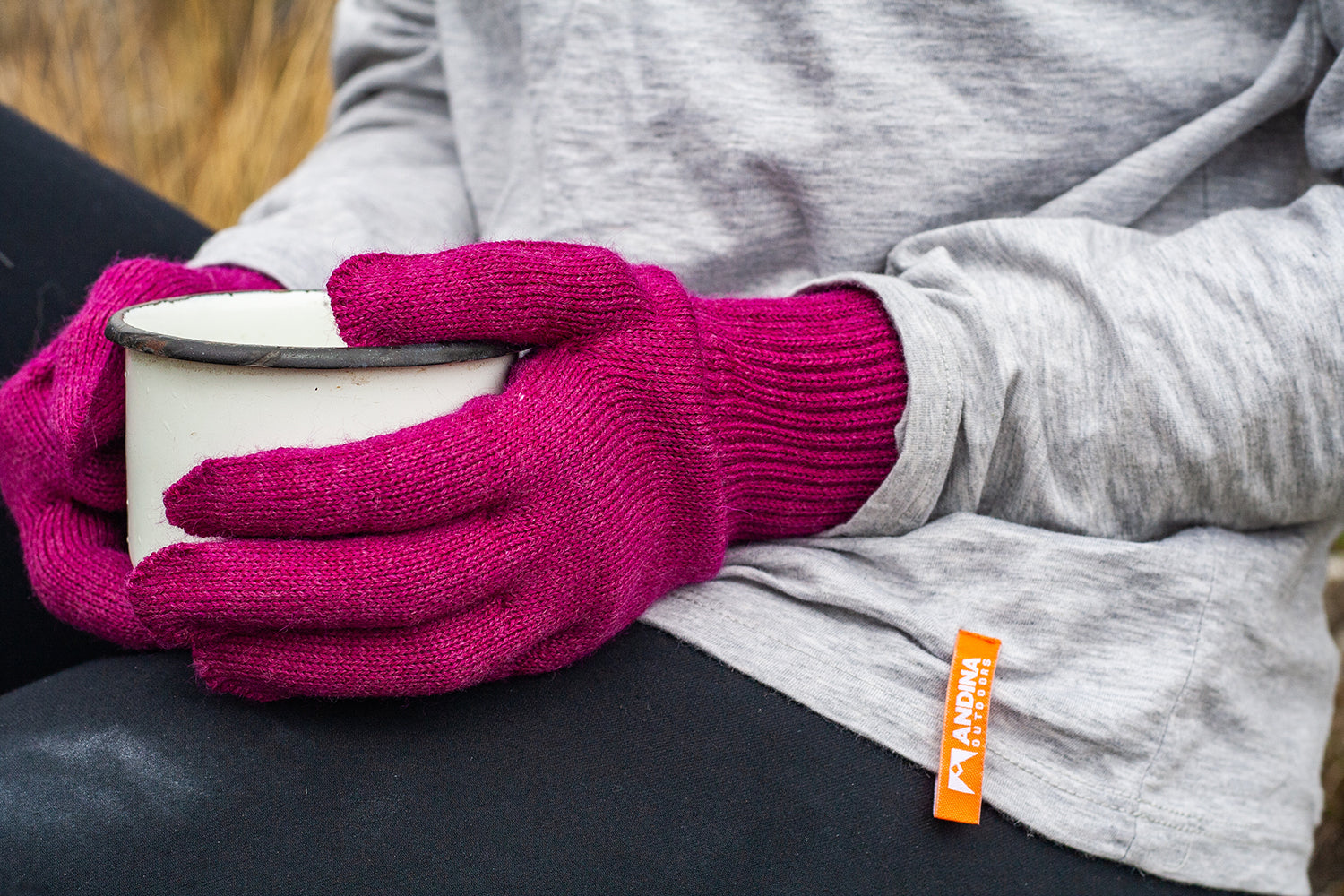When most people gear up for a hike, the focus tends to fall on boots, backpacks, or jackets. But ask any seasoned hiker, and they’ll tell you—what's between your foot and your boot can make or break your experience on the trail. Choosing the right hiking socks is more than a minor detail; it’s a critical piece of the puzzle that can affect your comfort, endurance, and even your safety.
At Andina Outdoors, we believe the best gear is the kind you forget you're wearing—because it's doing its job seamlessly. That’s why understanding how to choose the best hiking socks is an essential step for anyone who takes time outdoors seriously.

Why Hiking Socks Matter
Regular athletic or cotton socks just don’t cut it when it comes to hiking. They tend to trap moisture, slide around in your boot, and offer little to no protection against blisters or cold. The right hiking socks are designed with performance, durability, and comfort in mind, helping you go further, stay dry, and prevent painful issues like chafing or hot spots.
Well-designed hiking socks do three things better than everyday socks:
- Regulate temperature in both hot and cold weather
- Manage moisture and sweat
- Prevent blisters through proper fit and cushioning
Four Key Factors to Consider When Choosing Hiking Socks
The average person takes about 2,000 steps to travel one mile, and on a hiking trail, that number increases with uneven terrain, roots, and rocks. Every step counts, so your socks must perform. To find the best hiking socks for your trip, consider these four essential aspects:
1. Sock Height
Hiking socks come in several heights, from almost invisible no-shows to knee-high socks designed for mountaineering. Your sock height should complement your footwear:
- No-show socks: Suitable only for low-cut trail running shoes or light hiking shoes. They offer minimal protection against boot abrasion.
- Ankle socks: Cover the ankle bone and provide more protection, ideal for low- to mid-cut boots.
- Crew socks: The classic hiking sock height, offering protection a few inches above the ankle—perfect for boots with higher cuffs.
- Knee-high socks: Mostly used for mountaineering or very cold conditions, providing protection and warmth along the shin and calf.
Choose a sock height that prevents direct skin contact with your footwear to avoid abrasions.

2. Cushioning
The cushioning of your socks affects both comfort and warmth. Depending on the type of hikes you do and the conditions, select from:
- No cushioning: Ultrathin and breathable for hot weather, often used as liners.
- Light cushioning: Thin socks with padding in key areas like heel and ball of foot, great for warm conditions.
- Medium cushioning: Good padding for moderate to cold weather hikes, providing warmth and comfort.
- Heavy cushioning: Thickest and warmest, perfect for long treks in cold climates or mountaineering.
Too much cushioning may cause your feet to sweat more, so balance padding and breathability based on your needs.
3. Fabric
Most hiking socks use a blend of fibers to balance comfort, durability, and moisture management:
- Merino wool is the top choice for hiking socks due to its temperature regulation, cushioning, and natural odor resistance. Merino wool socks are soft, itch-free, and work well in all seasons.
- Polyester and nylon add durability and quick drying properties to sock blends.
- Silk is sometimes used in liners for moisture-wicking but lacks durability.
- Spandex helps socks maintain shape and reduces wrinkling and bunching.
At Andina Outdoors, we focus on natural fibers like merino wool and alpaca blended with technical fabrics, delivering socks that perform and last sustainably.

4. Fit
Proper fit is essential to prevent blisters and discomfort:
- Socks that are too big cause wrinkles and friction.
- Socks that are too small create pressure points and may slip inside your boots.
- To find your size, measure your actual foot length rather than relying solely on shoe size, as some people size up in footwear.
- When trying on socks, ensure the heel cup aligns perfectly with your heel and the fit is snug but not tight.
A well-fitted sock stays in place, reducing hotspots and fatigue on the trail.
Seasonal Considerations: Hiking Socks for Summer and Winter
Hiking Socks for Summer
For warm-weather hikes, opt for lightweight hiking socks made from merino wool or synthetic blends with mesh ventilation panels to maximize breathability and moisture-wicking.
Hiking Socks for Winter
Cold conditions demand socks that provide warmth and insulation. Thick hiking socks made primarily of merino wool or wool blends with medium to heavy cushioning will keep your feet warm and dry. Avoid cotton, as it retains moisture and cools quickly.

Specialized Features to Look For
- Cushioned hiking socks: Protect high-impact areas, adding comfort on rough terrain.
- Moisture-wicking hiking socks: Keep feet dry, reducing blister risk.
- Blister prevention hiking socks: Seamless toes and snug fit to minimize friction.
- Hiking socks with arch support: Provide extra stability and reduce foot fatigue.
- Durable hiking socks: Reinforced heel and toe areas increase longevity.
Gender-Specific Hiking Socks
Some socks are designed to better fit the anatomical differences between men and women. For example:
- Hiking socks for men often have a wider toe box and longer footbed.
- Hiking socks for women are narrower in the heel and arch for a more tailored fit.
Andina Outdoors offers detailed sizing guides and product recommendations to ensure you find the right match.
Caring for Your Hiking Socks
To extend the life of your socks and keep their performance optimal:
- Wash inside out on a gentle cycle.
- Avoid fabric softeners that reduce moisture-wicking.
- Air dry or tumble dry on low heat.
Good maintenance preserves fit, cushioning, and fabric integrity.

Final Thoughts: Why Your Socks Are as Important as Your Boots
Choosing the right hiking socks is crucial to any hiking experience. They protect your feet from blisters, regulate temperature, and provide comfort mile after mile. Don’t underestimate this small piece of gear that often gets overlooked but plays a significant role in your performance and enjoyment outdoors.
At Andina Outdoors, we are passionate about combining quality, sustainability, and performance in every product. Our socks, made from premium natural fibers like merino wool and alpaca, help you take confident steps on every trail.
Explore Our Sustainable Hiking Socks
Discover our selection of hiking socks designed for comfort, durability, and environmental responsibility. Whether you’re looking for lightweight options for summer or thick socks for winter treks, Andina Outdoors offers the gear you need to keep your feet happy on every adventure.
Visit andinaoutdoors.com to explore our collection and gear up for your next hike.


